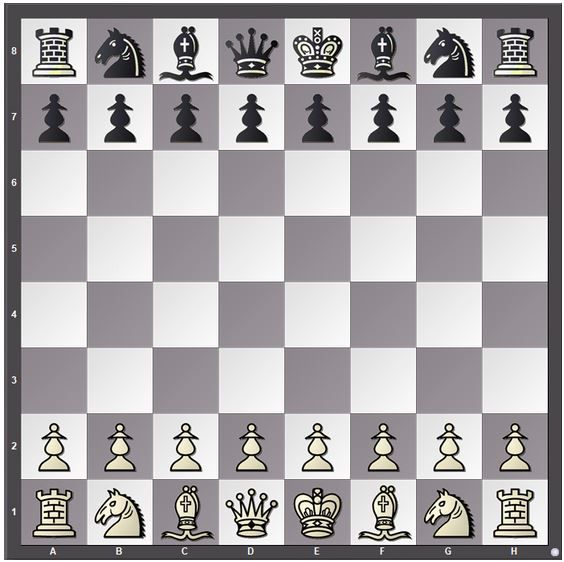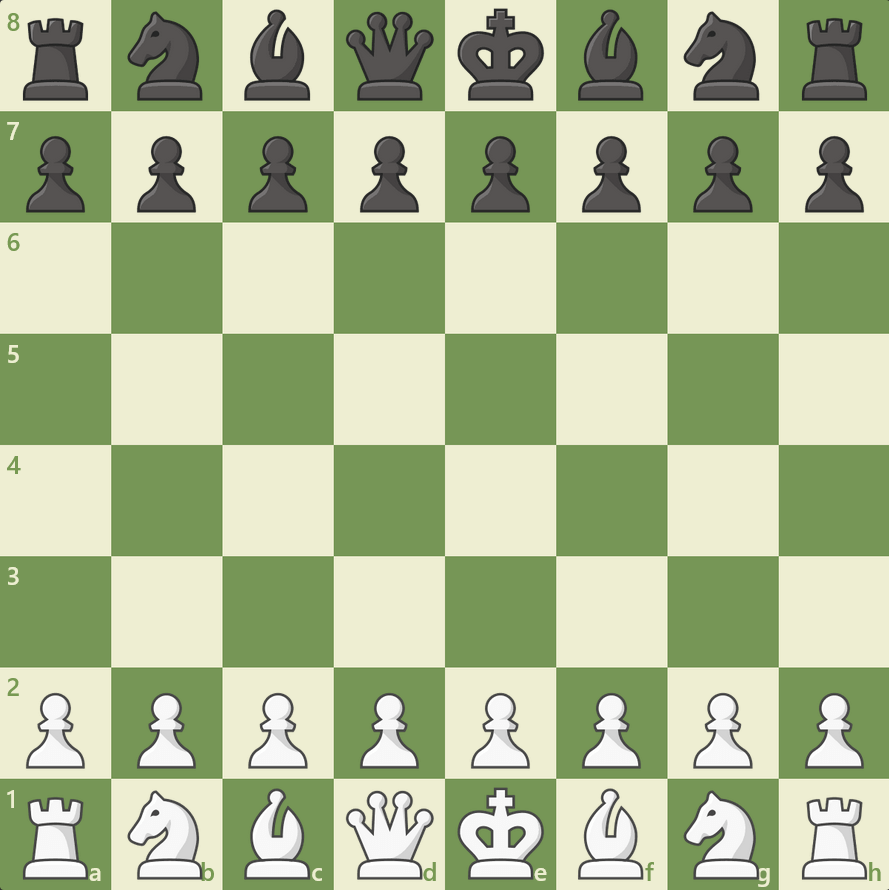How Chess New Players Can Level Up Quickly
Wiki Article
All Regarding Chess: Discover the Remarkable History and Strategies Behind the Game
Chess, with its origins dating back to 6th century India, has actually transformed substantially over the centuries. This game has actually astounded minds worldwide, showcasing the sparkle of legendary gamers like Garry Kasparov and Bobby Fischer. Comprehending the ins and outs of chess, from the motions of each piece to essential methods, discloses its depth. Yet, the inquiry remains: what drives the sustaining attraction with this ancient game? Discovering its background and approaches might reveal much deeper insights.The Beginnings of Chess: A Trip With Time
The precise beginnings of chess continue to be unsure, historical proof suggests that the game advanced from earlier approaches played in India around the 6th century. Referred to as Chaturanga, this very early type of chess featured pieces representing infantry, cavalry, elephants, and chariots, mirroring the military methods of the time. As Chaturanga spread out via profession routes, it adapted to numerous societies, leading to the development of Shatranj in Persia. This variant presented brand-new rules and item motions, laying the structure for modern chess.Chess Prodigies: Remarkable Numbers in the Game's Background
Throughout chess history, remarkable natural born players have actually arised, forming the game's landscape and motivating future generations. From famous champions who controlled the boards in their time to contemporary abilities redefining the restrictions of youth and skill, these gamers have made indelible marks on the sport. Their tales highlight not only individual luster yet also the developing nature of chess as a competitive endeavor.Famous Chess Champions
Chess has been shaped by the luster of various fabulous champions whose payments have left an indelible mark on the game. Numbers like Garry Kasparov, known for his vibrant design and unparalleled strategic deepness, controlled the chess globe during the late 20th century. Anatoly Karpov, his opponent, showcased remarkable positional understanding and emotional prowess, securing several globe titles. Bobby Fischer, an American prodigy, reinvented chess with his unequaled ability and extreme emphasis, culminating in his 1972 Globe Champion victory. In Addition, José Raúl Capablanca's natural capacity and endgame mastery set new standards in the very early 20th century. These champs not only mastered competition but likewise inspired generations, shaping chess into a worldwide phenomenon celebrated for its intellectual rigor and creativity.Modern-Day Prodigies
What makes a chess prodigy absolutely impressive? The capability to understand complex methods at an amazingly young age establishes them apart. Contemporary chess natural born players like Magnus Carlsen, Fabiano Caruana, and Alireza Firouzja have actually astounded target markets with their amazing skill. Carlsen, becoming a Grandmaster at just 13, redefined assumptions and ascended to Globe Champion standing. Caruana, recognized for his deep preparation and tactical expertise, has continually tested the elite. Firouzja, born in 2003, stands for the new generation, integrating creativity with unrelenting aspiration. These gamers exemplify a blend of natural skill, extensive training, and psychological stamina, influencing the game's advancement. Their contributions assure that chess remains a dynamic and dynamic technique, inspiring future generations of players worldwide.Understanding the Chessboard: Pieces and Their Activities
The chessboard functions as the field of battle where complicated strategies unfold, including a special set of pieces, each with unique activities and roles. Comprising 64 squares prepared in an 8x8 grid, it is home to the king, queen, rooks, knights, diocesans, and pawns. The king, the most crucial piece, relocates one square in any type of instructions, while the queen, one of the most effective, can traverse any type of variety of squares up and down, flat, or diagonally. Rooks relocate in straight lines, whereas diocesans glide diagonally across the board. Knights possess an unique L-shaped activity, jumping over various other pieces. Pawns progress one square yet capture diagonally, with the choice to move two squares onward on their preliminary step. Each item's activity adds to the complex dancing of method and methods, making the chessboard a dynamic phase for intellectual fight. Understanding these movements is fundamental for gamers intending to navigate the complexities of the game.
Necessary Methods for Beginners: Tips to Improve Your Game
Mastering the activities of chess pieces prepares for creating efficient strategies. For newbies, concentrating on regulating the center of the board is important. This enables for better movement and influence over the game. Establishing items early, instead of relocating the same piece several times, can assist develop a solid position.In addition, gamers should prioritize king safety and security by castling early, ensuring the king is put away from risks. Identifying tactical possibilities, such as forks, pins, and skewers, can offer benefits in product gain. It is also crucial to plan ahead; anticipating an opponent's steps cultivates far better defensive and offending play.
Ultimately, maintaining a well balanced strategy in between hostile and defensive approaches can prevent unnecessary oversights. By implementing these fundamental techniques, novices can boost their gameplay and develop a strong structure for future improvement in chess.
Advanced Methods: Elevating Your Chess Abilities
In the domain name of chess, grasping innovative strategies can considerably improve a gamer's capability. Acknowledging tactical patterns, understanding endgame methods, and recognizing opening up concepts are crucial elements that elevate one's game. visit site These components not just enhance total efficiency however likewise foster deeper critical reasoning.
Tactical Patterns Recognition
Identifying tactical patterns is vital for raising chess abilities to a higher degree. Gamers that understand these patterns can identify possibilities for tactical maneuvers, boosting their chances of success. Typical patterns include forks, pins, skewers, and found strikes, each offering strategic advantages when executed effectively. Recognizing these motifs allows gamers to expect their challenger's steps and counter them successfully. Furthermore, examining traditional video games can disclose just how masters utilized tactical patterns to secure victories. Regular technique and evaluation of one's own video games can better enhance pattern acknowledgment, making it possible for gamers to respond promptly and accurately throughout matches. Ultimately, developing this skill transforms the technique to chess, connecting the space in between amateur and innovative play.Endgame Approaches Proficiency
Effective endgame strategies can significantly influence the end result of a chess match, frequently identifying the difference in between a win and a draw. Advanced gamers comprehend the relevance of item control and the usage of pawns in the endgame. Trick tactics consist of advertising pawns to queens and creating passed pawns that can advance unblocked. Recognizing crucial placements, such as the opposition and zugzwang, is necessary for attaining beneficial setups. Proficiency of endgame strategies, such as king and pawn versus king scenarios, can turn possible losses into attracts or wins. Gamers need to also focus on simplifying the setting when ahead, exchanging pieces to convert product benefits right into victory. Constant technique and evaluation of endgame settings will elevate a gamer's general chess abilities greatly.
Opening Principles Recognizing
Grasping endgame approaches lays a solid foundation for recognizing opening up concepts. In chess, the opening stage is important as it establishes the phase for the center game. Chess. Gamers must prioritize control of the center, establishing pieces successfully, and ensuring king safety and security. Effective openings usually include relocating pawns to develop central supremacy while collaborating minor and major items for peak task. The concepts stress not relocating the exact same item several times without requirement and preventing early queen advancement, which can result in vulnerability. By sticking to these fundamental official source approaches, gamers can develop a solid structure that boosts their tactical opportunities later in the game. Recognizing these opening concepts is essential for boosting one's chess abilities and achieving success
The Cultural Impact of Chess: Why It Issues Today
Chess, a video game with origins mapping back over a millennium, remains to exert a profound cultural influence around the world. It important source transcends mere entertainment, acting as a tool for education and learning, essential thinking, and social interaction. Several academic establishments include chess into their curricula, promoting cognitive advancement and calculated thinking amongst trainees. The game likewise promotes inclusivity, bringing together varied communities and encouraging intergenerational connections.Additionally, chess has permeated pop culture, motivating literature, movies, and even style. Renowned figures like Bobby Fischer and Garry Kasparov have actually come to be social symbols, showing the game's potential for individual and nationwide pride. In the digital age, on-line platforms have even more equalized access to chess, enabling millions to engage with the game. As society faces intricate difficulties, chess remains relevant, supplying lessons in perseverance, foresight, and resilience, thereby strengthening its relevance in contemporary society and day-to-day live.
Regularly Asked Questions
Just How Has Chess Influenced Pop Culture and Media?
Chess has considerably influenced pop culture and media, showing up in films, literature, and art. It signifies intellect and technique, motivating narratives and characters while promoting themes of problem, competition, and the human experience.What Are the Conveniences of Playing Chess for Mental Wellness?

Are There Different Chess Variations Messed Around the Globe?
Yes, various chess versions are played worldwide, including Bughouse, Chess960, and Three-check chess. Each variant presents one-of-a-kind policies and techniques, offering gamers with diverse experiences and challenges that vary from conventional chess.How Do Chess Engines and AI Impact Modern Chess?
Chess engines and AI considerably improve contemporary chess by offering advanced evaluation, boosting gamer skills, and influencing strategies. They act as training devices and competitors help, transforming exactly how players come close to the game whatsoever degrees.What Prevail False Impressions Concerning Chess Athletes?
Usual false impressions concerning chess gamers include the idea that they are all shy wizards, entirely concentrated on method. Chess. Actually, gamers vary significantly in individuality, background, and technique, usually enjoying social interactions and varied rate of interestsReport this wiki page